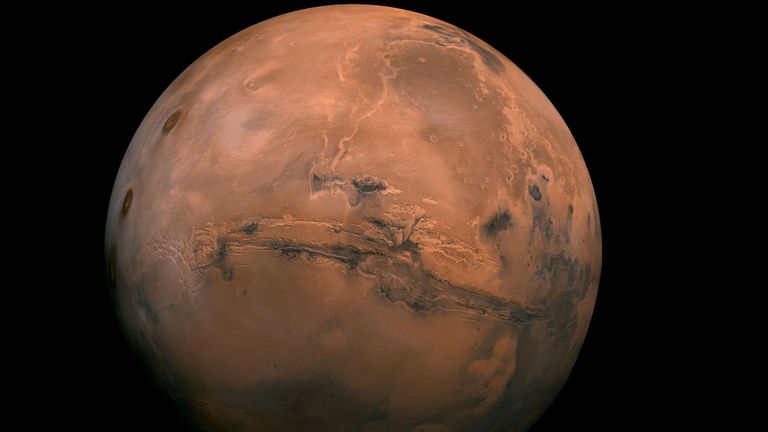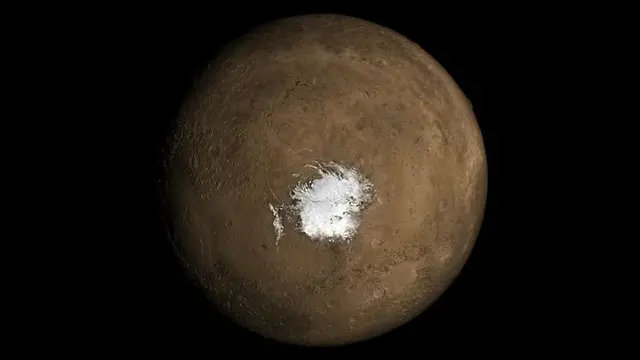New evidence has been revealed of an enormous salty lake of liquid water buried beneath the ice of the Martian south pole.
New radar data from a European Space Agency spacecraft suggests a large body of liquid water, as well as three smaller lakes, are spread out over 75,000 square kilometres - an area roughly the size of Scotland.
There is potential that the liquid water - if that is what it is - could harbour life. However, its extreme salinity could also make it uninhabitable.

Image:Liquid water can't exist on the surface of the planet
Scientists who conducted the study used techniques that have been used on Earth to identify subterranean lakes in the Arctic and Antarctic.
It was led by researchers from Roma Tre University in Italy, who previously co-authored a paper based on initial observations
suggesting a lake was present
in 2018.
Liquid water cannot exist on the surface of Mars due to the lack of any substantial atmosphere to raise the surface pressure.
However, there is evidence of flowing water from when the planet had an atmosphere billions of year ago.
Scientists have suspected that water could still exist trapped beneath the surface and this has been hotly debated ever since the initial discovery back in 2018.
At the time, scientists said their ground-penetrating radar found a lake about a mile beneath the southern ice cap.
They proposed that salts in the lake had kept it from freezing, despite the -68C (-90F) temperature.

Image:Canals on the Martian surface show where water once ran
Lakes on Earth with a salinity about five times that of seawater can still support life, but there are limitations on how salty water can be for life to thrive.
There are briny sub-glacial pools in Antarctica where water has a salt content 20 times that of seawater, but there isn't much life there.
Some scientists dispute that the reflective material the researchers found was liquid water and think it is more likely a kind of slush or sludge.
One potential investigation that could shed more light is the Chinese mission Tianwen-1, which means "quest for heavenly truth", that launched in July.
Tianwen-1 will take seven months to reach Mars and plans to search for underground water and evidence of possible ancient life forms.
The tandem spacecraft - with both an orbiter and a rover - is expected to enter the planet's orbit in February and is aiming for a landing site on Utopia Planitia.
NASA detected possible signs of ice at the site, according to an article in Nature Astronomy by chief engineer Wan Weixing, who died in May from cancer.
The latest Martian study is also published in the Nature Astronomy journal.
 简体中文
简体中文

